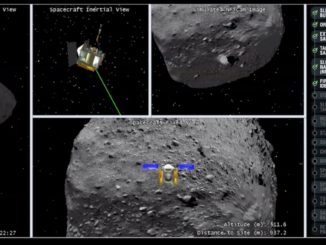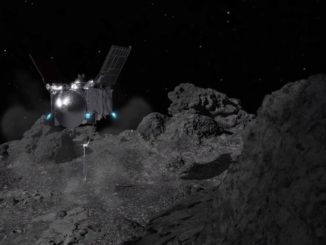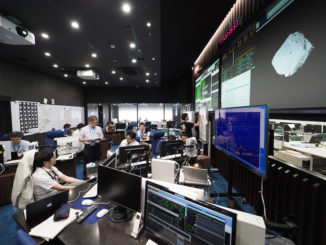Radar imagery of a mountain-size asteroid that approached Earth this week revealed the tiny world has its own moon.
Scientists know many asteroids have their own natural satellites, and one of the reasons observers were anxious to glimpse asteroid 2004 BL86 as it passed near Earth was to see if the rock has a companion.
The object’s closest approach to Earth on Monday was at a distance of about 745,000 miles (1.2 million kilometers) — about three times the distance of the moon.
Radar images acquired by NASA’s Deep Space Network and the National Radar Astronomy Observatory’s Green Bank Telescope show asteroid 2004 BL86 is about 1,100 feet (325 meters) across, and its moon has a diameter of of approximately 230 feet (70 meters). NASA says about 16 percent of near-Earth objects like 2004 BL86 have at least one satellite orbiting it.
Astronomers discovered the asteroid in 2004, and Monday’s flyby was predicted years in advance.
“The trajectory of asteroid 2004 BL86 is well understood,” NASA’s Jet Propulsion Laboratory said in a press release. “Monday’s flyby was the closest approach the asteroid will make to Earth for at least the next two centuries. It is also the closest a known asteroid this size will come to Earth until asteroid 1999 AN10 flies past our planet in 2027.”
Scientists used radar imaging to determine the size, shape, rotation and surface characteristics of the asteroid. The best radar imagery has a resolution of about 13 feet (4 meters) per pixel, officials said.
Another team of observers looked at the object’s composition, and a spectral analysis showed it has a similar make-up as asteroid Vesta, a massive body orbiting between Mars and Jupiter that was visited by NASA’s Dawn spacecraft in 2011 and 2012.
Follow Stephen Clark on Twitter: @StephenClark1.



